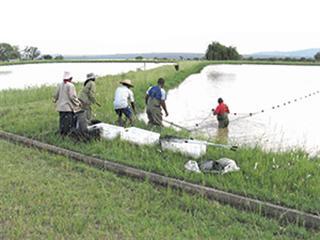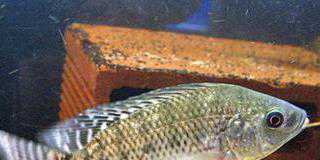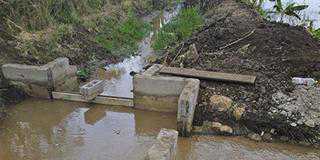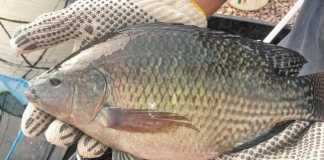
More tilapia are produced by pond farming than any other method, especially in the Near and Far East. This is quite surprising, given the relatively high (northerly) latitude of some of the big tilapia-producing countries, such as Egypt and China, as well as the more tropical ones, Thailand and the Philippines. The key to rapid growth in tilapia is warmth: water of 26°C to 30°C is considered optimal. In SA, water in outside ponds is only at these temperatures for five to six months of the year in the Lowveld regions of Limpopo, Mpumalanga and northern KwaZulu-Natal.
While SA lies between the latitudes 22°S to 35°S, China is far from being tropical in climate, lying between 20°N to 50°N, but the water temperatures aren’t that different to here, and China produces more than 500 000t tilapia/year. Egypt, the world’s second biggest tilapia producer, lies between 23°N to 33°N, exactly the same as South Africa – yet pond aquaculture there produces thousands of tons annually.
Clearly both the Chinese and the Egyptians are doing something right! Obviously, temperature does play a significant role, but an examination of other husbandry aspects provides the clue to their success:
- Extensive, well-made pond systems, coupled with use of mono-sex (all-male) tilapia of known ancestry and proven growth performance.
- A regime of supplemental feeding using manure to fertilise ponds to reduce feed costs.
- A system of careful and intelligent management.
- Hatcheries are centralised, and seed is bought in, rather than produced on-farm.
- The grow-out farmer concentrates on real production rather than trying to produce a high quality fingerling from limited resources.
So often in SA we hear of people failing at tilapia culture, and yet the source of their stock is invariably ‘Piet, next door’ – a recipe for failure.
Not the key
A recent article in the media condemned the use of O. mossambicus, claiming that only the top strains of O. niloticus will lead to success in tilapia farming in SA. Yet the authors ignore the documented scientific facts that the best strains of O. mossambicus grow at rates comparable to many of the best O. niloticus strains – and at lower temperatures. Use of Nile tilapia is not therefore the key to success: good husbandry, economically viable feeding and correct system design are.
Chinese/Egyptian production doesn’t involve the use of genetically improved farmed tilapia (GIFT) or others – just the better strains of what they had (Nile tilapia). In SA, we continue to use the worst strains. Back to ponds: pond aquaculture requires larger volumes of water than re-circulating aquaculture systems (RAS), as well as suitable slope and soil content.
A slope of around 3% is considered best, as ponds can then be constructed so that complete drainage can be achieved. Soil with a high clay content is essential to seal off ponds. In Egypt, some ponds are covered with tunnels to increase the winter water temperature: when temperatures drop, the fish move under the tunnel seeking warmer water.
Well done
There are many places suitable for extensive pond culture: KZN’s Mtunzini area and parts of the Limpopo and Mpumalanga Lowveld. If well done, pond aquaculture can produce at least 10t fish/ha. One of the priorities is supplementing expensive feed pellets with other inputs, such as earthworms, maggots, or even feeding with green lucerne – an untried, but attractive research option due to its high palatability and protein content.
If you happen to be located in the warmer, lower altitude parts of the country, have a reasonable water supply that can be re-used for irrigation after the fish, then consider the pond option for tilapia aquaculture.
Nicholas James is an ichthyologist and hatchery owner. Contact him at [email protected]. Please state ‘Aquaculture’ in the subject line of your email.













